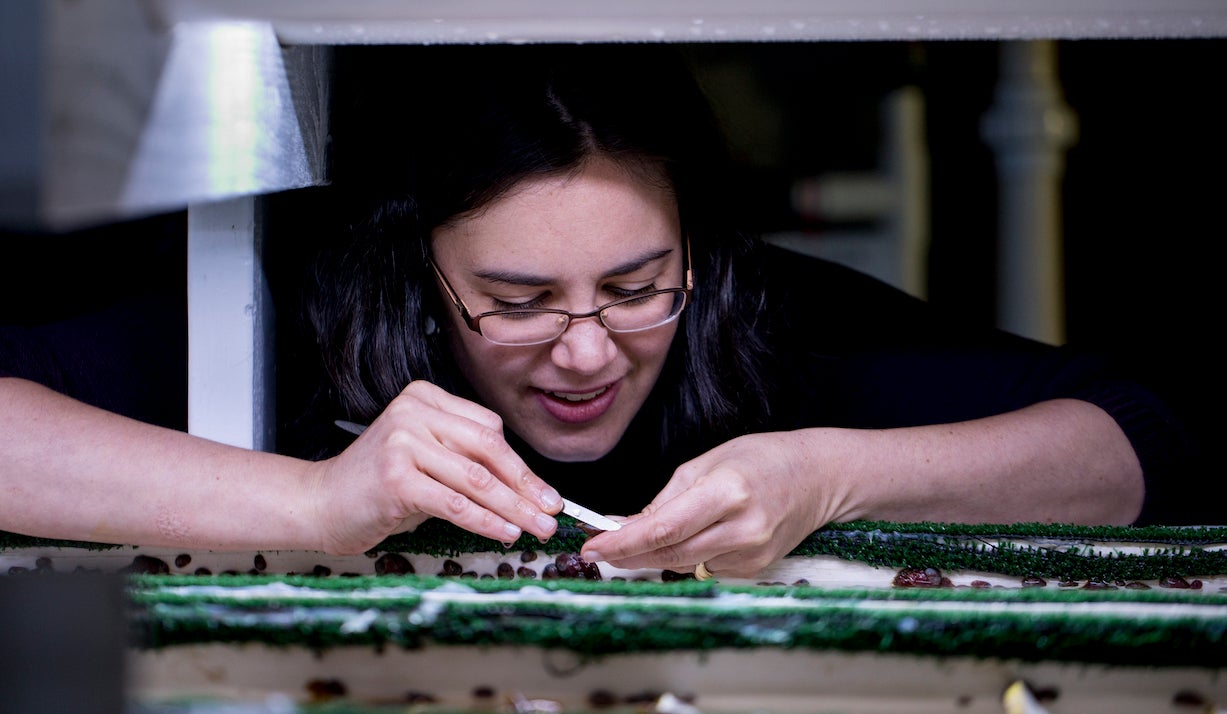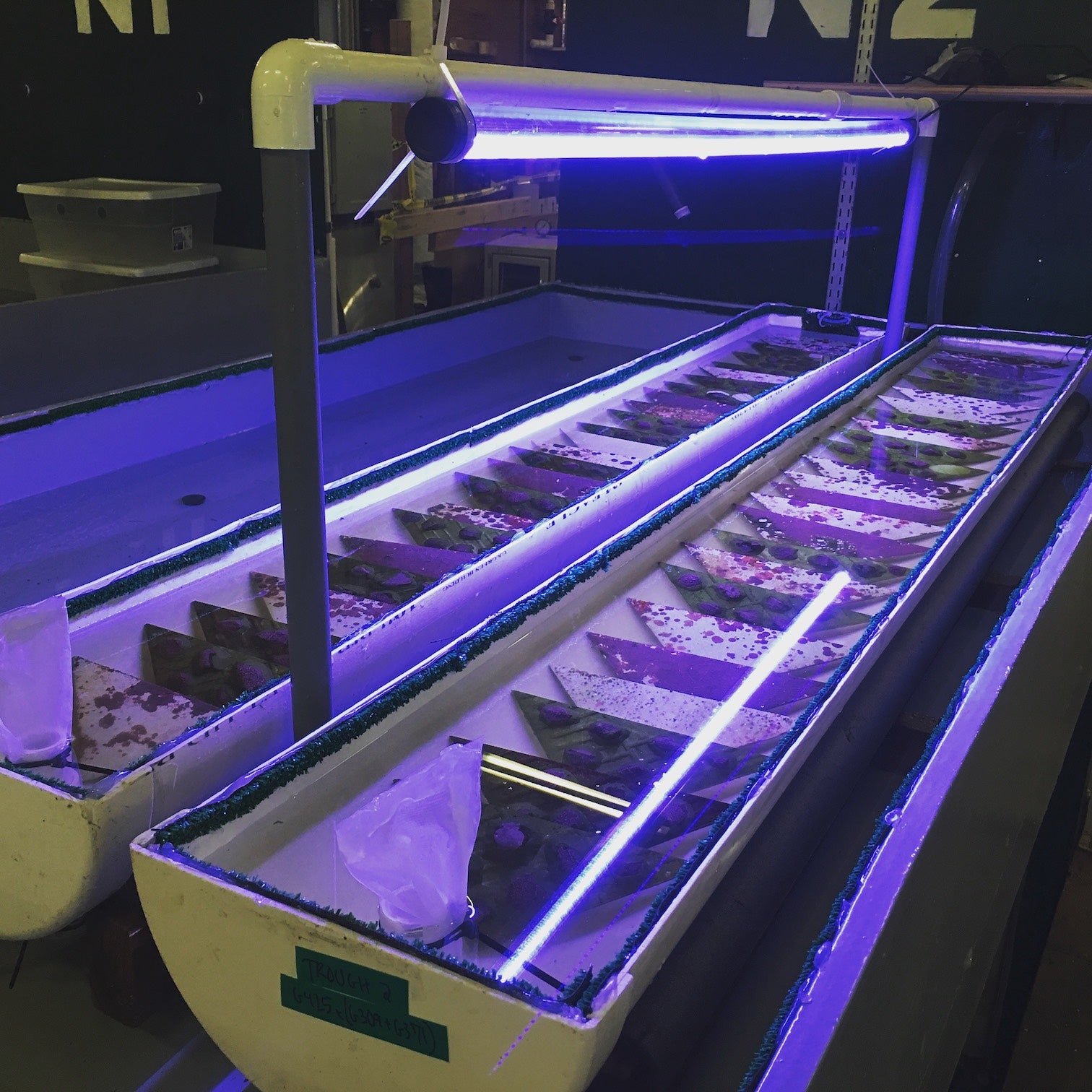The Bodega Marine Laboratory’s white abalone program has millions of new additions following its most successful spawning ever at the University of California, Davis, facility.
Three out of nine recently collected wild white abalone spawned last week, as did seven of 12 captive-bred white abalone. One wild female was particularly generous, producing 20.5 million eggs herself.
“It’s amazing to have this much more genetic material added to our captive population,” said program director Kristin Aquilino, an assistant project scientist with the UC Davis Bodega Marine Laboratory. “To have one female wild white abalone spawn over 20 million eggs is just incredible.”

Diverse and resilient
To achieve the program’s ultimate goal of reintroducing large numbers of white abalone to the ocean, the animals need to have as much genetic diversity as possible.
“The more genetically diverse the population, the more they will be able to withstand temperature changes and other environmental challenges,” said Laura Rogers-Bennett, a biologist with the Karen C. Drayer Wildlife Health Center in the UC Davis School of Veterinary Medicine and the California Department of Fish and Wildlife.
The captive breeding program is essentially a specialized fertility clinic for this endangered marine snail. Bodega Marine Laboratory manages it in close coordination with the National Oceanic and Atmospheric Administration (NOAA) Fisheries, and the California Department of Fish and Wildlife. A consortium of 10 agencies, institutions and nonprofits work together to raise and spawn captive white abalone with the hope of one day returning their populations to the wild.
Searching for ‘cribs’

Before last week’s spawning event, the most a single white abalone in the program spawned was about 11 million eggs. Then, on April 16, female wild white abalone tag Green 312 spawned 20.5 million eggs. There were so many embryos produced, Bodega Marine Laboratory had to scramble to expand its rearing capacity.
“I felt a bit like a mom entering a delivery room to have one baby then being told she’s delivering 16 million of them — and with only one crib at home,” Aquilino said.
Aquilino and her colleagues spent the hours and days after the spawning overnight-shipping millions of embryos to NOAA and Cabrillo Marine Aquarium and frantically looking for — and finding — space at partnering facilities. Aquilino said this sort of outgrowth is what is needed to save the population.
“There need to be other places they can go so we can grow large numbers of animals if we want to recover this species quickly enough to save it from extinction,” she said.
Long-distance relationships
White abalone’s historic range stretched from Point Conception in California south to Baja California in Mexico. Now, scientists are lucky to find even one along all that coast. Prized and overfished for their tender meat, they became the first marine invertebrate to be listed as an endangered species in 2001.
White abalone are, as Aquilino says, terrible at long-distance relationships. Their numbers are so critically low in the wild that they can rarely find each other in the ocean to reproduce, making them effectively sterile. While there are likely a few thousand white abalone in the wild, there are far more in the captive breeding program.
The program has spent the past several years refining and perfecting their rearing process, which includes specific temperature and lighting protocols, protective waxing treatments, and specialized diets.
In addition to Aquilino and Rogers-Bennett, white abalone team members include principal investigator and Bodega Marine Laboratory Director Gary Cherr, and shellfish health expert Jim Moore of Karen C. Drayer Wildlife Health Center and the California Department of Fish and Wildlife.
Media Resources
Kat Kerlin, UC Davis News and Media Relations, 530-750-9195, kekerlin@ucdavis.edu